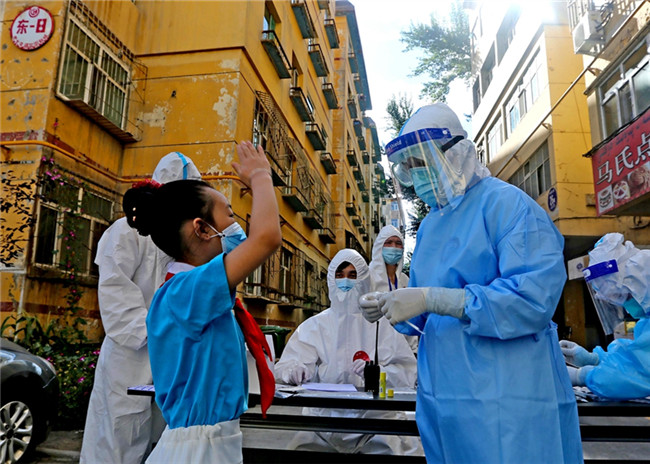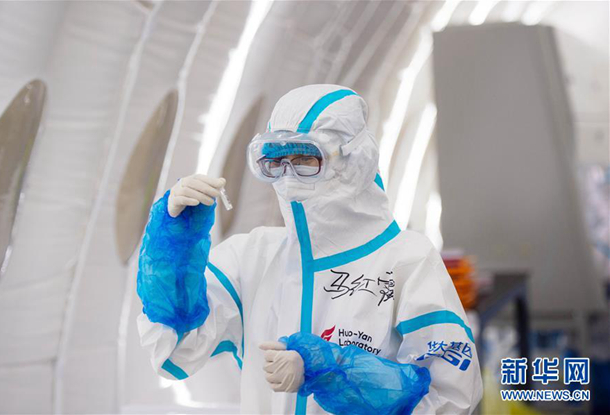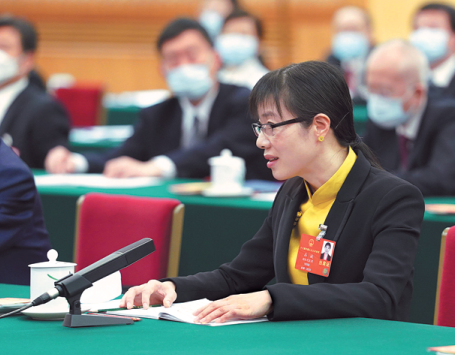
COVID-19 Tests Required for Shanghai-Bound Travelers
All travelers arriving at Shanghai airports from countries severely affected by the novel coronavirus pandemic must undergo epidemiological investigation and tests for COVID-19 before being escorted to homes or hotels for quarantine, as Shanghai stepped up measures preventing the spread of the virus from overseas.
Although the whole procedure lasts for more than 10 hours, travelers, both Chinese and foreign, have shown increasing cooperation as a rising number of them were prepared for what to expect through the new immigration rules, frontline workers said.
Measures implemented by Shanghai to curb the virus' spread from overseas started on March 6, when travelers from four countries were subject to epidemiological investigation and quarantine. The scope has since been expanded to include travelers from four to eight, 16 and then 24 countries on Friday. On Sunday, the city announced all inbound travelers should be subject to investigation, take the nucleic acid test and be escorted to homes or hotels for quarantine lasting 14 days if the test result shows they are negative for the virus.
After receiving customs checks and epidemiological investigations by the local centers of disease control and prevention at the airports, travelers will be transported to designated venues scattered in Shanghai's 16 districts to undergo nucleic acid testing.
"As it takes six to eight hours before the test result is obtained, we provide them with simple meals, biscuits, bottled water, and deck chairs. Elderly travelers and those having babies and young children will be arranged in a separate room to rest," said Ji Guanzhong, a worker at a testing venue near Shanghai Hongqiao International Airport.
"Most travelers cooperated very well as they had learned what to expect from the procedures from our information online or friends who had returned to China," said Ji from the Changning District Civil Affairs Bureau.
The testing venue in Changning District, away from residential communities, is a new park not put into use yet, and such places in the open air with good ventilation are preferred to keep travelers and workers safe, Ji said.
Through the whole journey on the bus and at the testing venues, travelers are required to keep space between them to stay safe, according to the workers.
(Source: chinadaily.com.cn)
 Women Medics in NW China's Xinjiang Contribute to COVID-19 Epidemic Containment
Women Medics in NW China's Xinjiang Contribute to COVID-19 Epidemic Containment Women CPC Members on Front Line of Anti-COVID-19 Battle in Beijing
Women CPC Members on Front Line of Anti-COVID-19 Battle in Beijing Deputy Recalls Role in COVID-19 Fight
Deputy Recalls Role in COVID-19 Fight- Woman Epidemiological Researchers Race Against the Clock on Front Line
 Pic Story of Nurse Who Aided COVID-19 Fight in Wuhan
Pic Story of Nurse Who Aided COVID-19 Fight in Wuhan Volunteer Provides Milk Tea, Back up Anti-Epidemic Workers in NE China
Volunteer Provides Milk Tea, Back up Anti-Epidemic Workers in NE China

 京公网安备 11010102004314号
京公网安备 11010102004314号